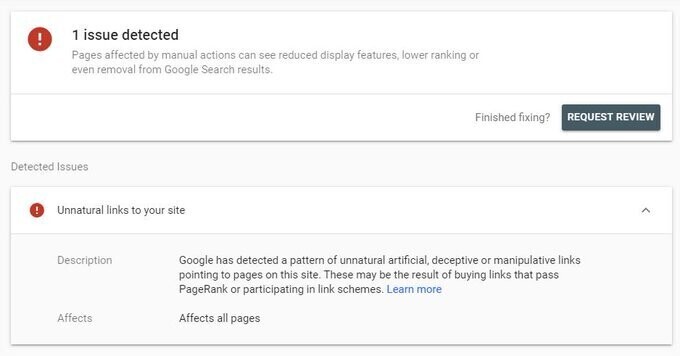All Categories
Featured
Table of Contents
- – What's The Most Reliable Semantic Search And S...
- – Who Makes The Top Semantic Seo Tools
- – Top-Rated Semantic Seo Checklist
- – Who Is The Leading Semantic Search Algorithms...
- – Where To Buy The Top Semantic Content Optimi...
- – Top Semantic Seo Insights Money Can Buy
- – What Is The Most Preferred Structured Data F...
The web is transforming, coming to be increasingly more semantic. SEO is likewise changing and becoming a lot more semantic. This is due to the fact that online search engine have evolved and are moving a growing number of in the direction of reading web content on the internet. Certainly, that has also changed the way we produce content, especially if we intend to rank far better in the search engines.
Intertwingularity is not typically acknowledged, individuals keep claiming they can make points deeply ordered, categorizable and consecutive when they can not. Based on the relationships in between search intents, the search engine favors a material in positioning by determining the range between the vectors of meaning.
It allows you to see, beginning with a subject, all the entities that belong to that subject. In this manner you can plainly see which entities/concepts/ideas have actually already been covered on your web site, and you can find new possibilities by understanding what content you can add and just how to develop it.
What's The Most Reliable Semantic Search And Seo Brand
It has the ability to make your web content easy to understand for search engines on the one hand and for your audience on the various other. Structuring your material model highlights your content and its underlying connections to ensure that internet search engine can recognize you amongst hundreds of items of info, making you extra visible to individuals who satisfy the search intent pertaining to your company.
In semantic SEO copywriting, an editor begins with a more comprehensive variety of topics and tailors the content to consist of semantically relevant terms and phrases that help readers recognize a subject, similar to checking out material in a wiki. From a web content writing point of view, one functional method to do this is to develop a vocabulary of terms and inquiries bordering your target subject.
Who Makes The Top Semantic Seo Tools
Discover more regarding by viewing the by!.

Semantic search refers to the process of just how online search engine understand and match key phrases to a searcher's intent in organic search results page. Prior to semantic search, search engines like Google ran like matchmakersaligning specific words in your query with those precise words on websites. The results were uncomplicated but frequently did not have depth.
Top-Rated Semantic Seo Checklist
It allows Google to supply quick, exact responses to look inquiries about real-world topics. When you type a question word into Google, you're not simply getting in a series of words.
When you search for "Apple," Google doesn't simply see a word that describes a fruit. It recognizes Apple as a firm and can supply related info. It was Google's response to the surge of voice searches, where questions became a lot more conversational and nuanced.
Who Is The Leading Semantic Search Algorithms Company
By incorporating NLP, Hummingbird permitted Google to relocate beyond simple keyword matching. It aided the search engine comprehend search intent, boosting the chances that results would precisely match the reason behind an individual's search. As the third most important ranking variable after content and links, RankBrain has enhanced Google's semantic search capabilities to recognize the significance of search questions.
Making it more efficient at handling never-before-seen search queries. RankBrain considers even more than simply keyword phrases when evaluating a search inquiry.
So it fetches results that match the keywords and align with the general intent of offering puppy training suggestions. And if the customer often looks for dog-related material, Google could focus on a lot more thorough training guidesrecognizing the individual's ongoing interest in the subject. Combining modern technologies like the Understanding Chart, Hummingbird, and RankBrain, semantic search assists the Google formula analyze and link data throughout a vast internet of details.
Where To Buy The Top Semantic Content Optimization
The focus shifts from keyword selection to an alternative method including individual intent, topical significance, and total individual experience. Developing content that deals with the searcher's demands with detailed info can boost your SERP rankings. Below, we detail the patterns and techniques that consolidate the need for semantically notified web content. Later, we provide workable tips to transform these understandings into best methods.
A broader method to material aligns better with semantic search's shift away from exact keyword phrase matching and towards individual intent. Material that covers search questions more thoroughly not only satisfies individuals.
UX aims to create an aesthetically enticing, easy to use user interface with appealing, quality web content that urges site visitors to stay. Semantic search technology enables search engines to aim for results that supply the finest possible UX.
Top Semantic Seo Insights Money Can Buy

All showcase Google's capacity to deal with a topic question adequately. By recognizing the context and intent behind user questions, internet search engine can deliver more relevant information and potentially raise individual engagement. Customization in search engine result produces better UX.Based on your past search history and preferences as a customer, semantic search assists search engines customize the outcomes to match your one-of-a-kind demands and rate of interests.
So it brings outcomes that match the key phrases and align with the total intent of providing puppy training advice. And if the customer often browses for dog-related content, Google might focus on extra in-depth training guidesrecognizing the customer's continuous passion in the subject. Incorporating innovations like the Understanding Chart, Hummingbird, and RankBrain, semantic search helps the Google algorithm interpret and connect data throughout a large web of information.
What Is The Most Preferred Structured Data For Semantic Seo Out Right Now
The emphasis shifts from keyword option to an all natural method incorporating individual intent, topical relevance, and overall customer experience. Creating material that addresses the searcher's requirements with detailed information can boost your SERP positions.

And sort of material can best satisfy their demands. A more comprehensive strategy to content aligns much better with semantic search's change far from precise keyword matching and towards customer intent. Which explains the raised focus on subject collections, as opposed to individual key phrases. Web content that covers search inquiries better not only pleases individuals.
UX intends to develop an aesthetically enticing, easy to use interface with engaging, top quality content that encourages visitors to stay. Semantic search technology enables search engines to aim for outcomes that offer the finest feasible UX.
All showcase Google's capacity to address a subject question comprehensively. By understanding the context and intent behind user inquiries, internet search engine can supply extra appropriate info and possibly enhance user interaction. Customization in search results creates much better UX.Based on your past search background and preferences as a user, semantic search assists online search engine customize the results to match your special needs and passions.
Table of Contents
- – What's The Most Reliable Semantic Search And S...
- – Who Makes The Top Semantic Seo Tools
- – Top-Rated Semantic Seo Checklist
- – Who Is The Leading Semantic Search Algorithms...
- – Where To Buy The Top Semantic Content Optimi...
- – Top Semantic Seo Insights Money Can Buy
- – What Is The Most Preferred Structured Data F...
Latest Posts
How To Buy The Top Semantic Seo Platform
Who Has The Most Recommended Semantic Search Engine Results Pages (Serps) Service?
What Is The Most Recommended Semantic Tagging For Seo Available Today
More
Latest Posts
How To Buy The Top Semantic Seo Platform
Who Has The Most Recommended Semantic Search Engine Results Pages (Serps) Service?
What Is The Most Recommended Semantic Tagging For Seo Available Today